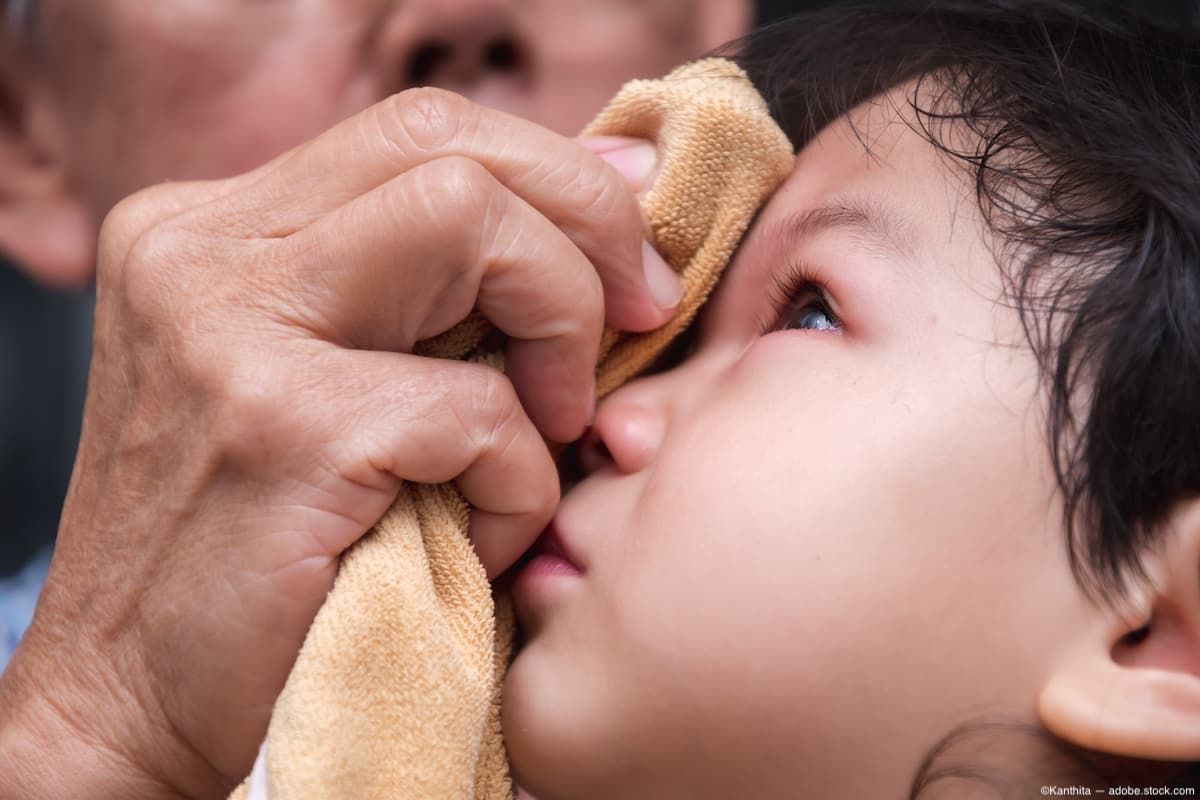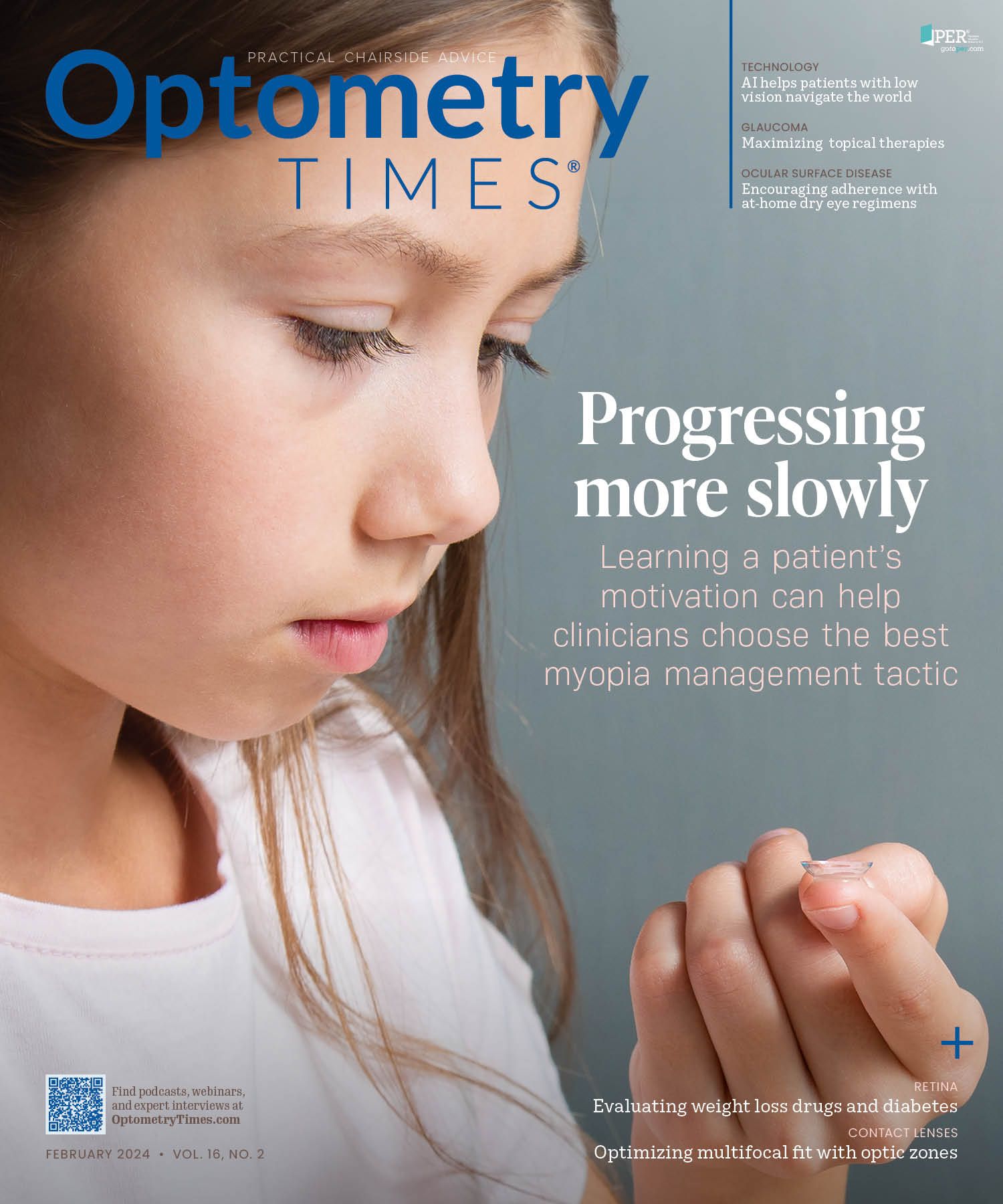Meibomian gland dysfunction: At-home treatment devices
Warm compresses are an invaluable step in the treatment of dry eye.
Image Credit: AdobeStock/Kanthita

As technological advances continue to impact eye care, it is important that we recognize how the optometric profession can properly educate our patients on the proper treatment of ocular surface disease and dry eye. Almost every day I speak with family and friends about dry eye, chalazia, and proper lid hygiene. It is important that we are sensitive to our patient’s busy lifestyles and what devices are convenient for patients at home, in the office, and when they are traveling. This article will explore the many options we now have for patients.
According to a 7-population based study, the prevalence of dry eye syndrome related to meibomian gland dysfunction ranged from 38% to 68% worldwide.1 The Tear Film & Ocular Surface Society’s Dry Eye Workshop (TFOS DEWS) II defines dry eye as “a multifactorial disease of the ocular surface characterized by a loss of homeostasis of the tear film, and accompanied by ocular symptoms, in which tear film instability and hyperosmolarity, ocular surface inflammation and damage, and neurosensory abnormalities play etiological roles.”2 Studies have shown that age, race, sex, environment, and possibly genetic factors play a role in the patient’s signs, symptoms, and severity of dry eyes.1 Symptoms of dry eye, according to TFOS DEWS II, include grittiness, stinging, irritation, discomfort, and visual disturbance. Visual disturbance was added recently to the list of dry eye symptoms because the instability of tear film can cause patients to have fluctuating, intermittent blurry vision.2
There are 2 main types of dry eye: aqueous deficient or evaporative. Aqueous-deficient dry eyes usually occur due to lacrimal gland insufficiency, whereas evaporative dry eye is mainly due to meibomian gland dysfunction. Classification of dry eye is crucial as it dictates treatment of the patient’s signs and symptoms. While TFOS DEWS II postulates that dry eye disease is a spectrum condition and the 2 types may coexist, the way that practitioners should treat and manage each type is slightly different.3 By definition, meibomian gland dysfunction is a “chronic, generalized disorder of the meibomian glands that is frequently characterized by terminal duct obstruction and/or qualitative or quantitative alterations in the secretion of the glands.”1 Evaporative dry eye due to meibomian gland dysfunction is a common clinical problem encountered by eye care professionals. In evaporative dry eye, inadequate quantity or quality of lipids produced by the meibomian glands leads to faster evaporation of the preocular tear film and to symptoms and signs of dry eye disease. The traditional treatment of meibomian gland dysfunction consists of warm compresses, lid massage, and improving lid hygiene, all measures aimed at relieving obstructions of the glands and increasing meibum outflow.3 The challenge of a good warm compress is to have the appropriate heat reach the meibomian glands, which are located deep within the inner surface of the eyelid, without burning the sensitive skin of the eyelids.4
Although there are several in-office treatments to target warming and compression of meibomian glands, it is critical that patients can develop a regimen at home to keep symptoms under control. In this article, we focus on warming treatments and therapies for evaporative dry eye secondary to meibomian gland dysfunction that patients can do in the comfort of home. Warming masks can help to release the meibum secretion through their application on the closed eyelids. The physiological melting point of the meibum in normal patients is 32 °C, but in patients with meibomian gland dysfunction, it is reported to increase to 45 °C because of the alteration of its chemical composition.6 Due to the increased melting point, temperatures close to 45 °C have been suggested for warm compress therapy.7 However, studies have shown that temperatures nearing 49 °C have the potential to burn human skin and cause first-degree burns, so patients should check the temperature of warm compresses before applying.4 Eye care practitioners should recommend using warming devices once or twice a day for 10 to 15 minutes to have constant, adequate heat to melt the meibum.
Patients will often ask about using a hot towel as a compress instead of purchasing a warm compress. According to a study performed by Schjerven Magno et al, “hot towel compress treatment is effective at raising the eyelid temperature to therapeutic ranges when conducted in accordance with best practice.”5 The towel should ideally reach a temperature of 45 °C and be reheated at least every 2 minutes to maintain the right amount of heat to the eyelids. It is important that the patients adhere to the strict regimen and temperature if they opt to use the hot towel method, as treatment without reheating at least every 2 minutes is not sufficiently effective. Studies support that most commercially available eyelid-warming masks heat quickly (to 37 °C within the first minute) and have a stable temperature profile (between 37 °C and 41 °C) for 10 to 12 minutes. The towel dropped below the desired temperature 2 minutes after heating.5 Due to the need to constantly reheat, it is often difficult to main the same consistency with the warm wash towel as compared to the heat masks that are on the market.
There are a multitude of commercially available eyelid-warming masks on the market that retain and release heat in various ways. The best known are microwaveable masks that use beads or pearls to retain heat, for example, the Bruder Moist Heat Eye Compress (Bruder Healthcare), the Heyedrate Heated Eye Mask (Eye Love), the Mediviz Warm Compress Eye Mask (Dryeye Rescue), the Blepha EyeBag (Thea Pharmaceuticals), the EyeBag Instant (The EyeBag Company), and The Eye-ssential Mask (TheraPearl).
The Bruder Moist Heat Eye Compress is a reusable mask that absorbs water molecules from the air and releases them as moist heat.8 Patients microwave the mask for 20 to 25 seconds and apply it for 10 minutes. The masks can burn sensitive eyelid skin, so patients are encouraged to test its temperature on the back of their hand before applying it onto their eyelids.8 The Heyedrate Heat Mask and the Mediviz Warm Compress Eye Mask are used similarly to the Bruder Moist Heat Eye Compress, microwaved for 15 to 20 seconds and applied for 15 minutes. The Blepha EyeBag (Thea Pharmaceuticals) is a reusable silk and cotton mask that is heated in a microwave for 40 seconds and applied to the eyelids.8 The EyeBag Instant (The EyeBag Company) is a single-use, disposable warm compress. It is activated by air, starts to heat 2 to 3 minutes after it is removed from the sachet, and is placed on the eyelids for 10 minutes. The Eye-ssential Mask produces warmth when the pearls inside the mask absorb, hold, and deliver the heat acquired in the microwave.8 It is heated for 10 to 15 seconds, depending on wattage of your microwave, and applied to the eyelids for up to 20 minutes.9 This mask can also be used as a cold compress as the pearls can absorb, hold, and deliver cool after being placed in the refrigerator.
There are masks that can be recommended for patients who do not own a microwave oven or who prefer other forms of heating. The EyeGiene Insta-Warmth System (Eyedetec Medical) works by placing warming wafers inside the mask without heating them in the microwave.8 The system produces heat from a chemical reaction in each single-use wafer; patients must continue to purchase wafers from the company. There also are companies using newer technology; for example, Aroma, which offers a warm compress powered by USB.
Lid hygiene is another important component of treating dry eyes. Bacteria can exacerbate dry eyes, and therefore it is important to keep warm compress masks clean regardless of the type. ThermaMEDx EverTears (ThermaMEDx) is a commercially available, premoistened compress and cleaning pad. The patient activates the pad by bending it, applying it to 1 eyelid for 2 minutes, using the pad to clean the lid, flipping the pad onto the other side, and repeating the same procedure for the other eye.
Dry eye syndrome is a very common diagnosis that eye care practitioners need to be able to manage and treat. The ultimate goal of treating most of these patients is to provide adequate relief for daily life. With emerging technology and options, the best warm compress is the one the patient will be the most adherent with to ensure that their symptoms are well controlled.
References:
Stapleton F, Alves M, Bunya VY, et al. TFOS DEWS II Epidemiology Report. Ocul Surf. 2017;15(3):334-365. doi:10.1016/j.jtos.2017.05.003
Craig JP, Nichols KK, Akpek EK, et al. TFOS DEWS II Definition and Classification Report. Ocul Surf. 2017;15(3):276-283. doi:10.1016/j.jtos.2017.05.008
Narang P, Donthineni PR, D’Souza S, Basu S. Evaporative dry eye disease due to meibomian gland dysfunction: preferred practice pattern guidelines for diagnosis and treatment. Indian J Ophthalmol. 2023;71(4):1348-1356. doi:10.4103/IJO.IJO_2841_22
Bitton E, Lacroix Z, Léger S. In-vivo heat retention comparison of eyelid warming masks. Cont Lens Anterior Eye. 2016;39(4):311-315. doi:10.1016/j.clae.2016.04.002
Schjerven Magno M, Olafsson J, Beining M, et al. Hot towels: the bedrock of meibomian gland dysfunction treatment - a review. Cont Lens Anterior Eye. 2023;46(2):101775. doi:10.1016/j.clae.2022.101775
Blackie CA, Solomon JD, Greiner JV, Holmes M, Korb DR. Inner eyelid surface temperature as a function of warm compress methodology. Optom Vis Sci. 2008;85(8):675-683. doi:10.1097/OPX.0b013e318181adef
Bron AJ, Tiffany JM, Gouveia SM, Yokoi N, Voon LW. Functional aspects of the tear film lipid layer. Exp Eye Res. 2004;78(3):347-360. doi:10.1016/j.exer.2003.09.019
Valencia-Nieto L, Novo-Diez A, Blanco-Vázquez M, López-Miguel A. Therapeutic instruments targeting meibomian gland dysfunction. Ophthalmol Ther. 2020;9(4):797-807. doi:10.1007/s40123-020-00304-3
Yolo-Inc. Therapearl Eye-SSENTIAL Mask: Side effects - what you need to know. Eye Lounge. March 12, 2021. Accessed February 2, 2024. https://www.eyelounge.co.uk/pages/therapearl-eye-mask-side-effects-what-you-need-to-know.
